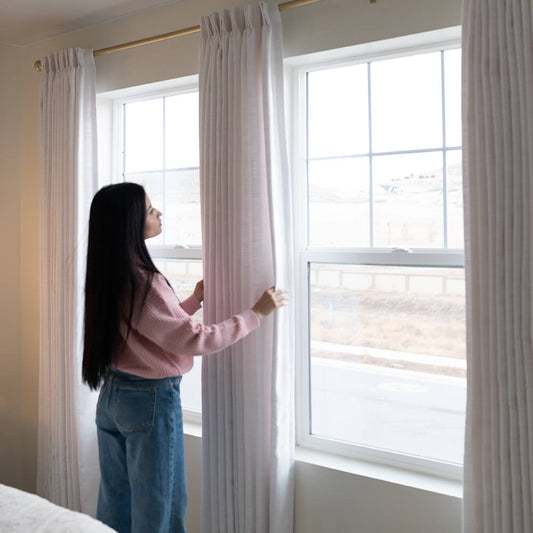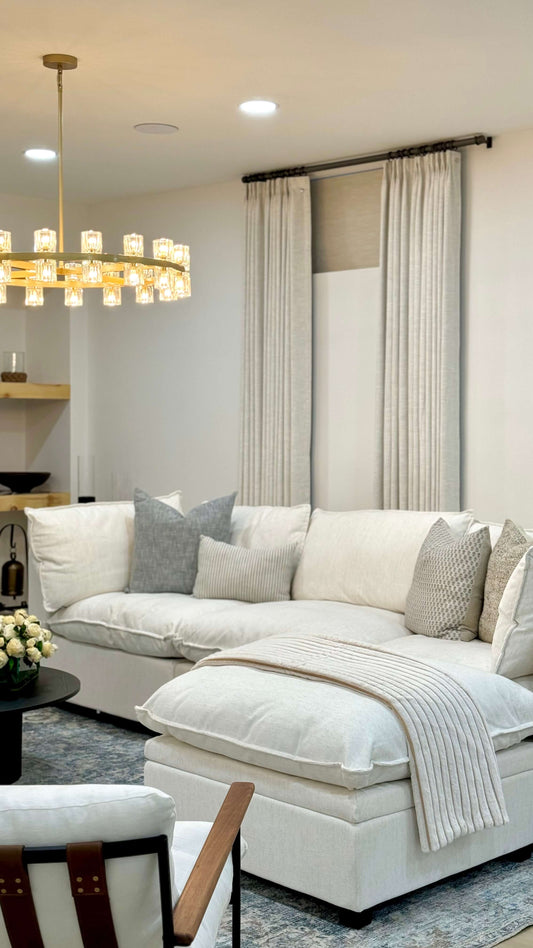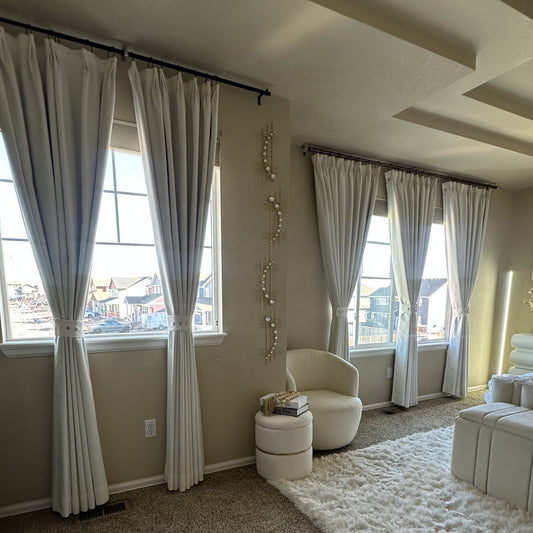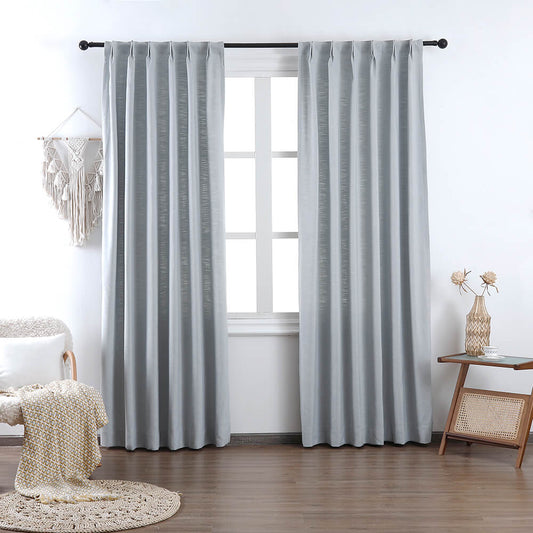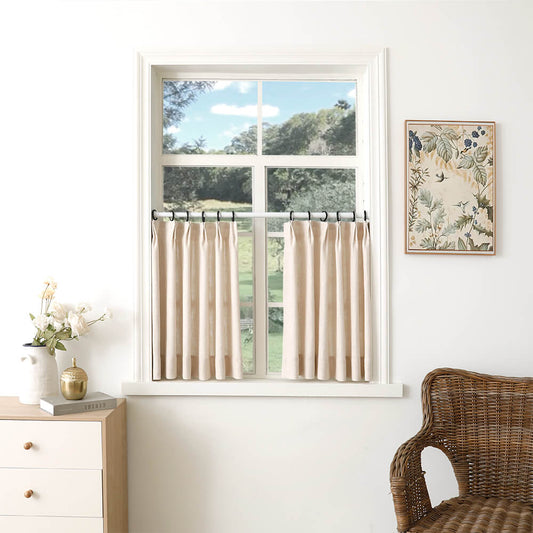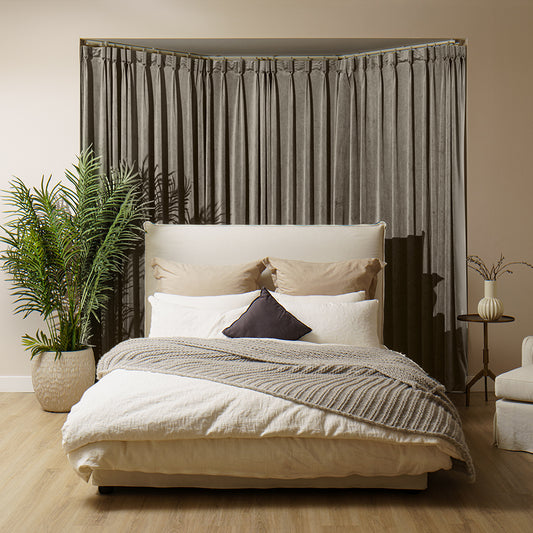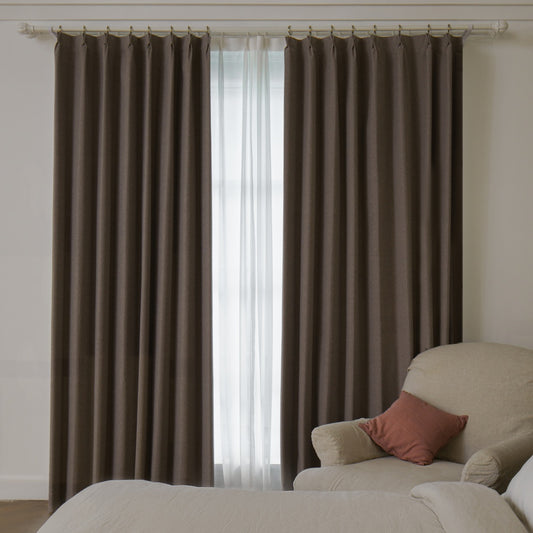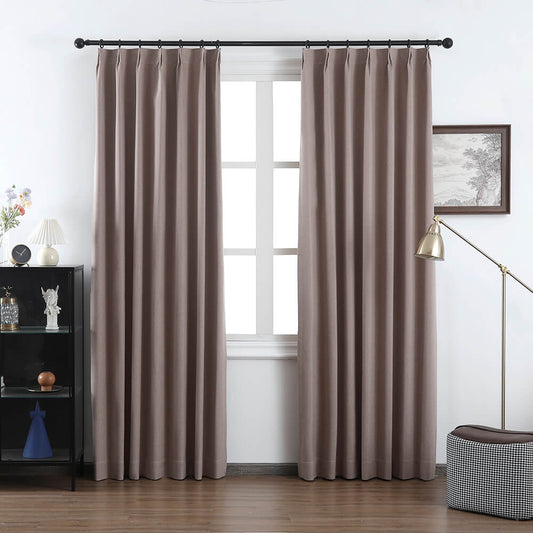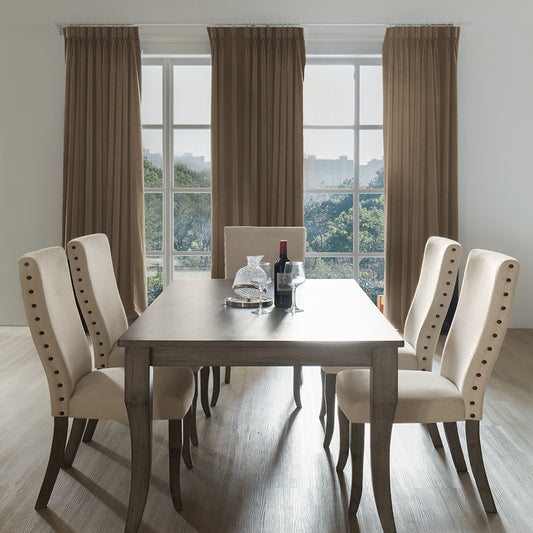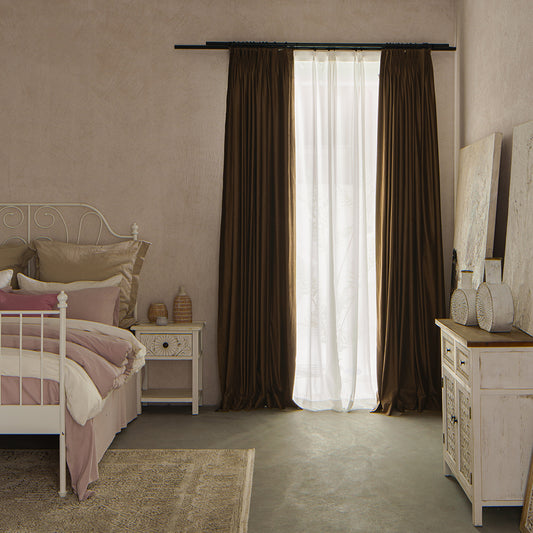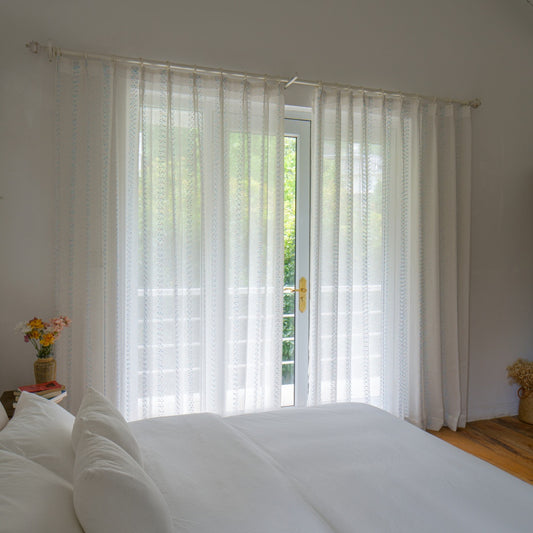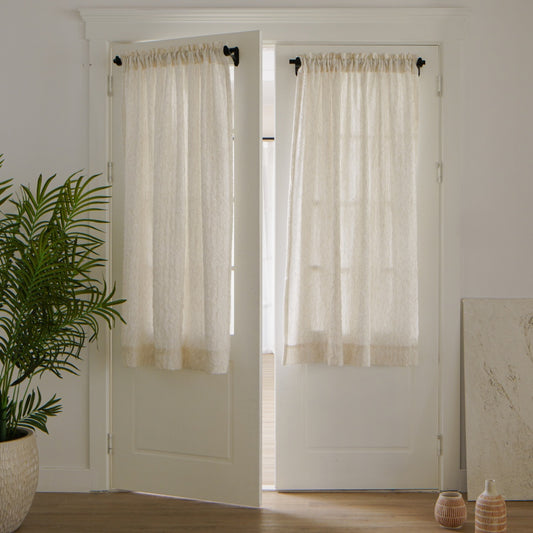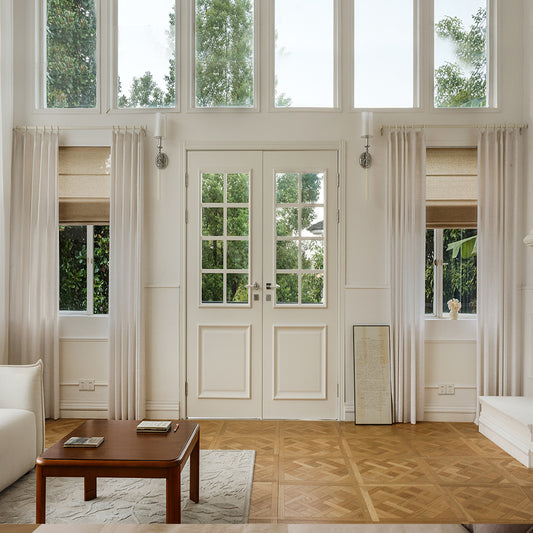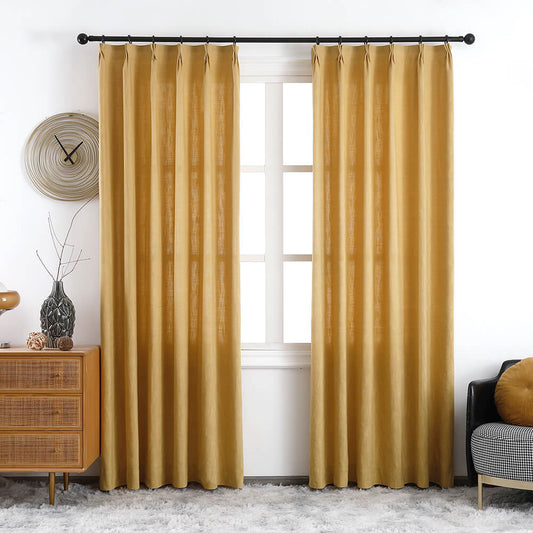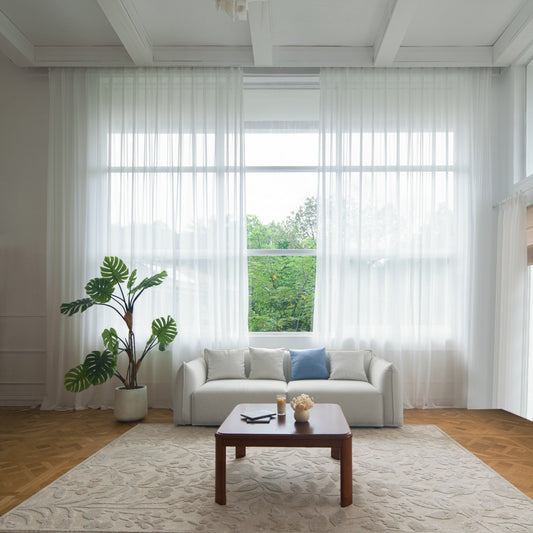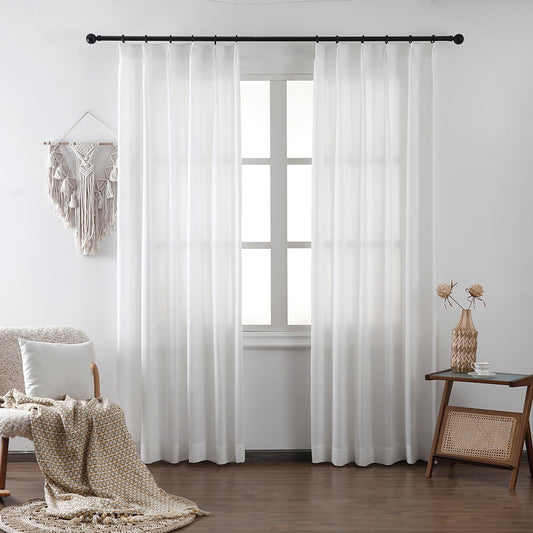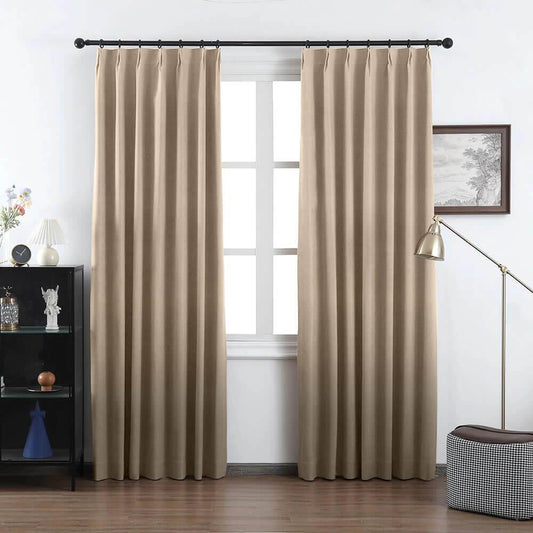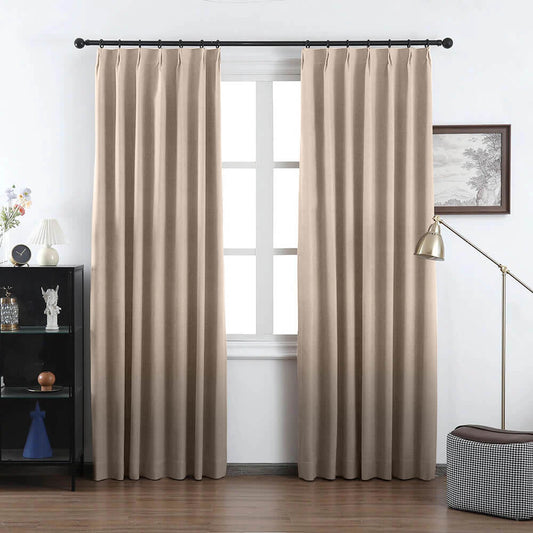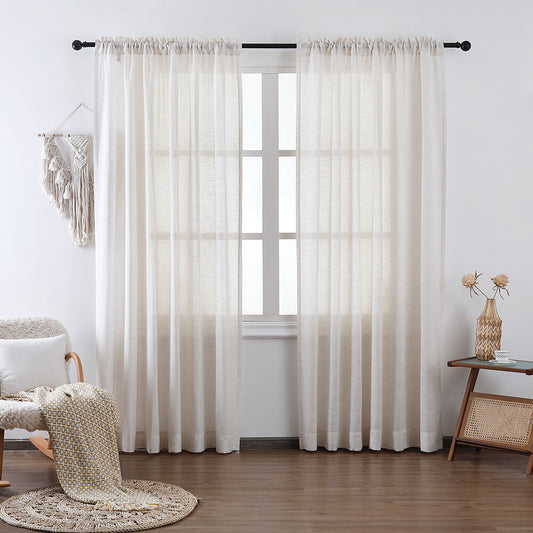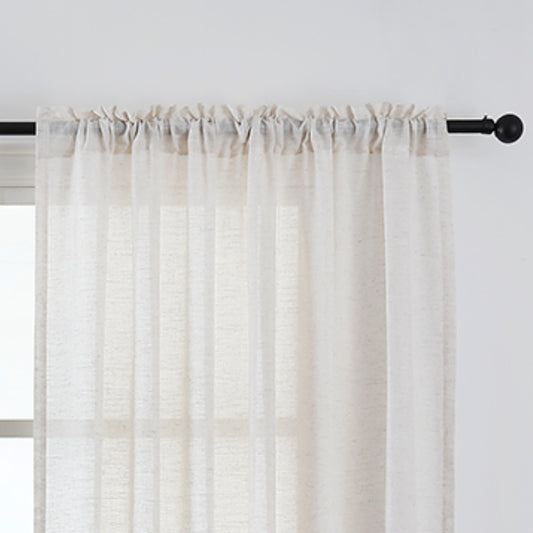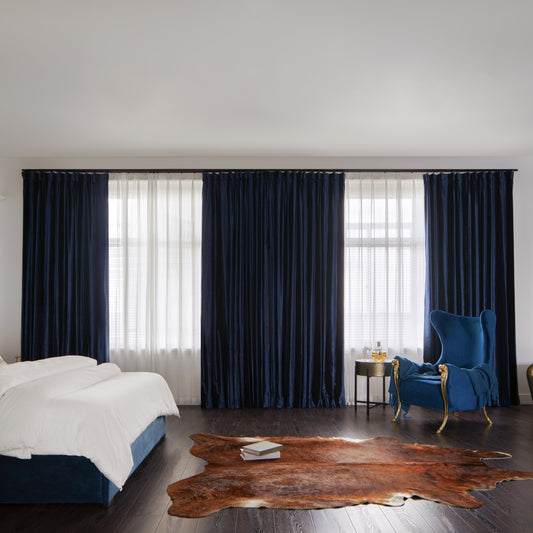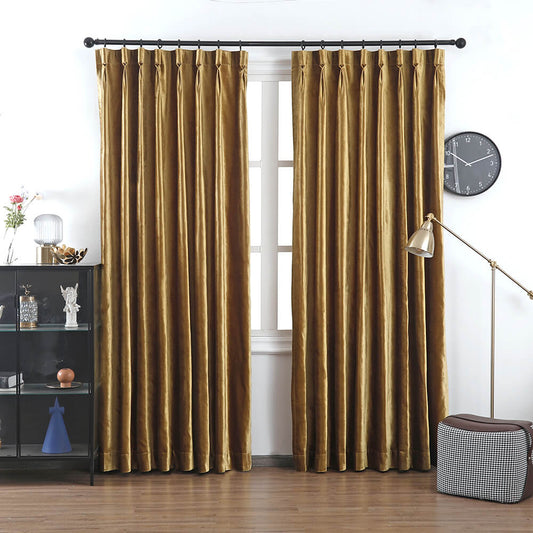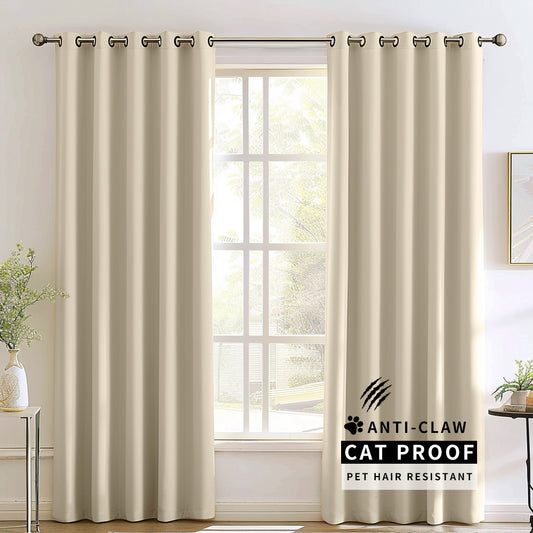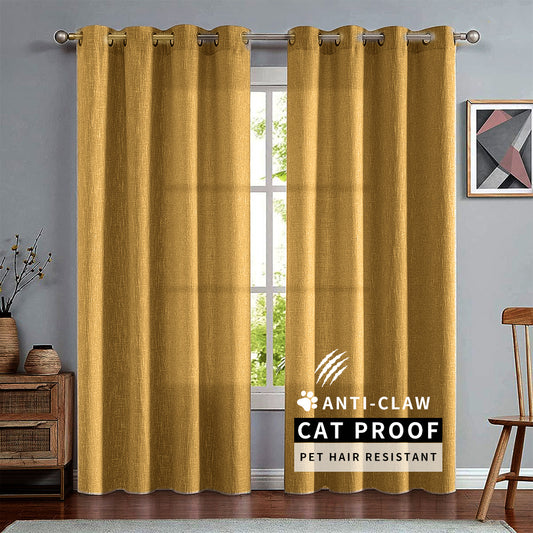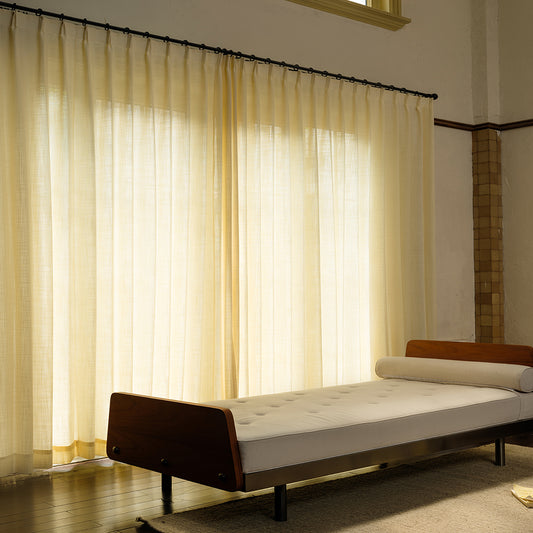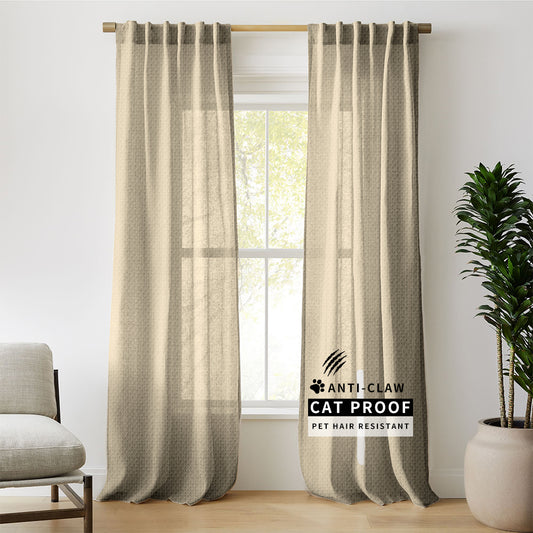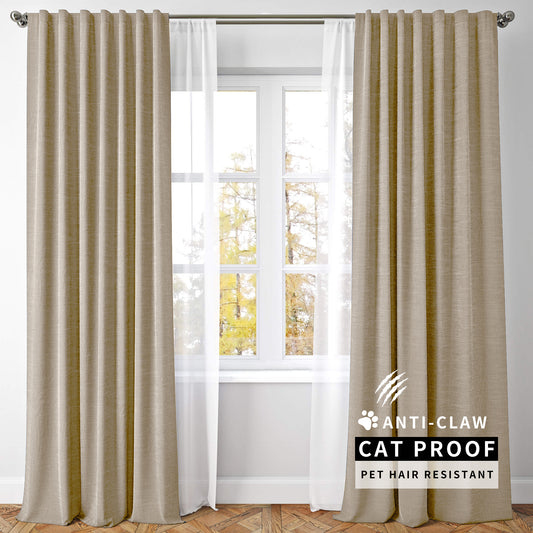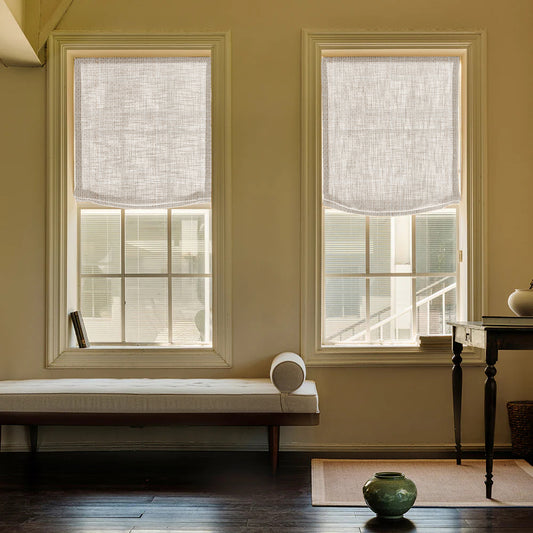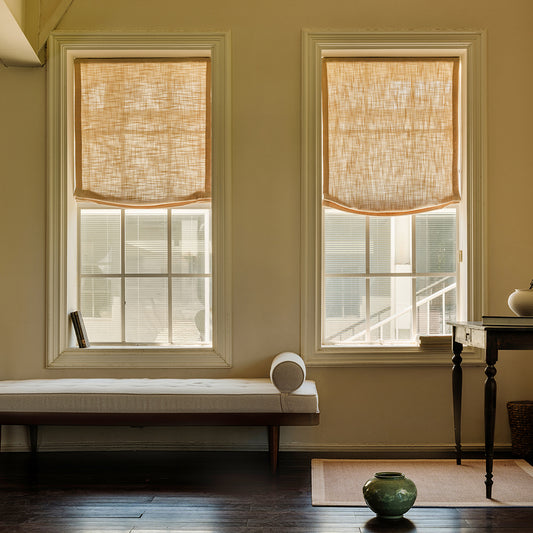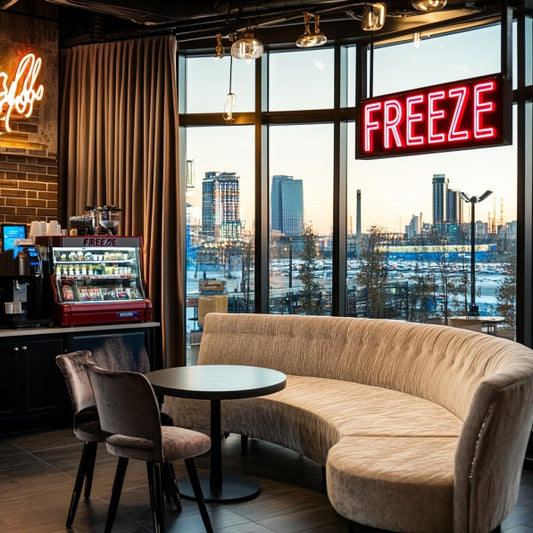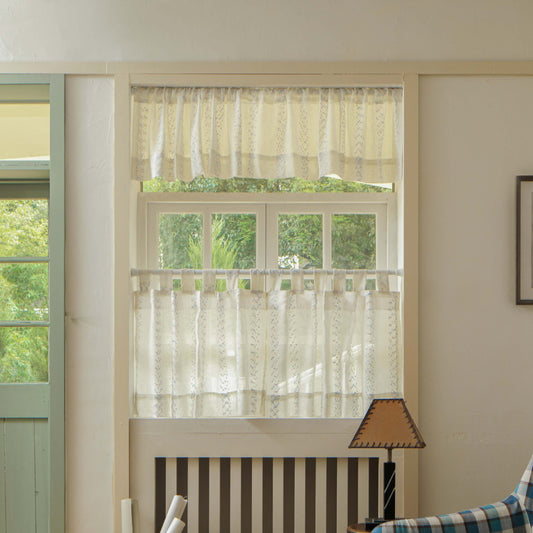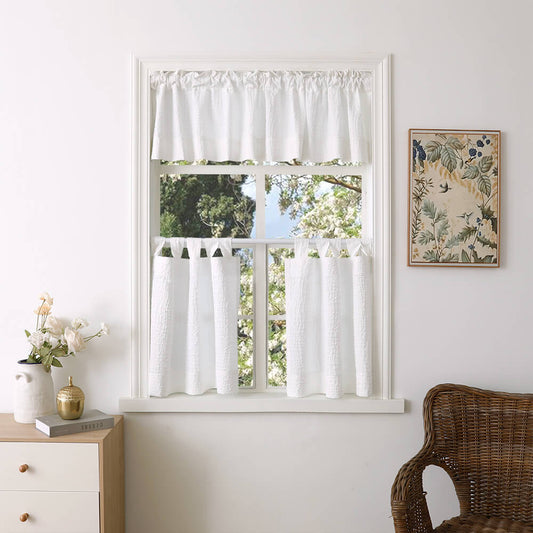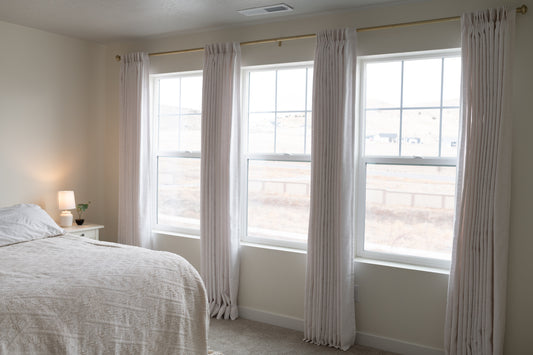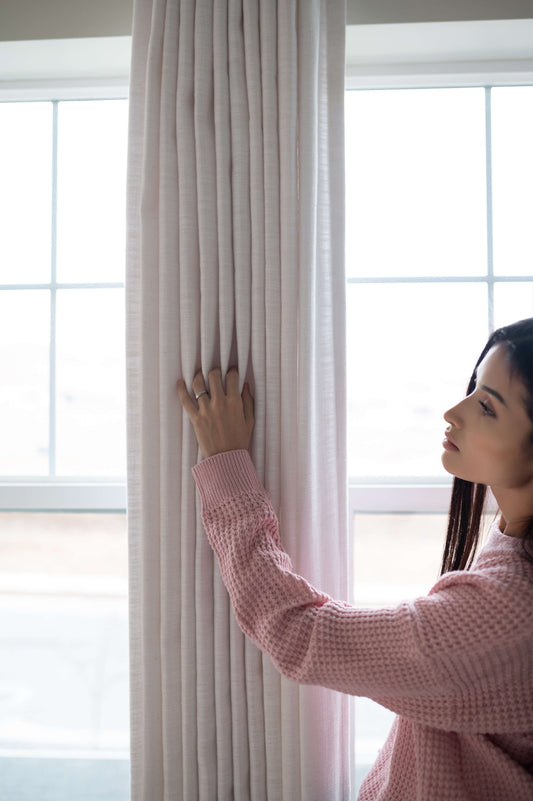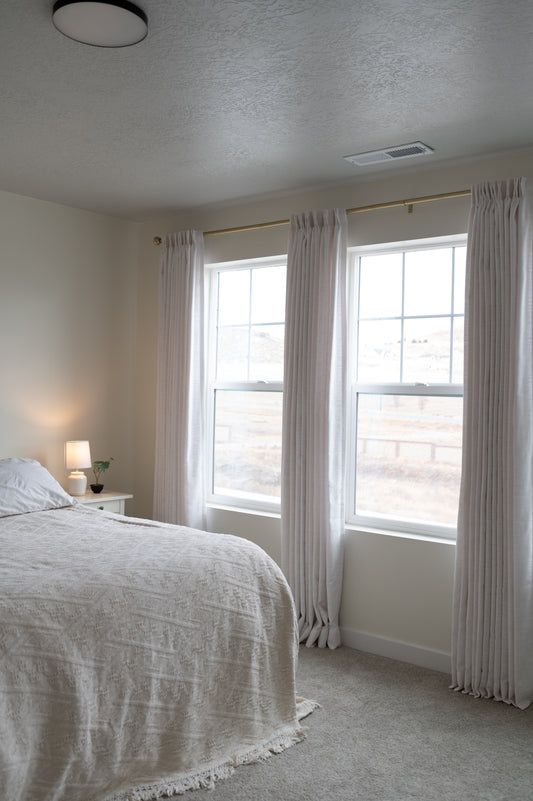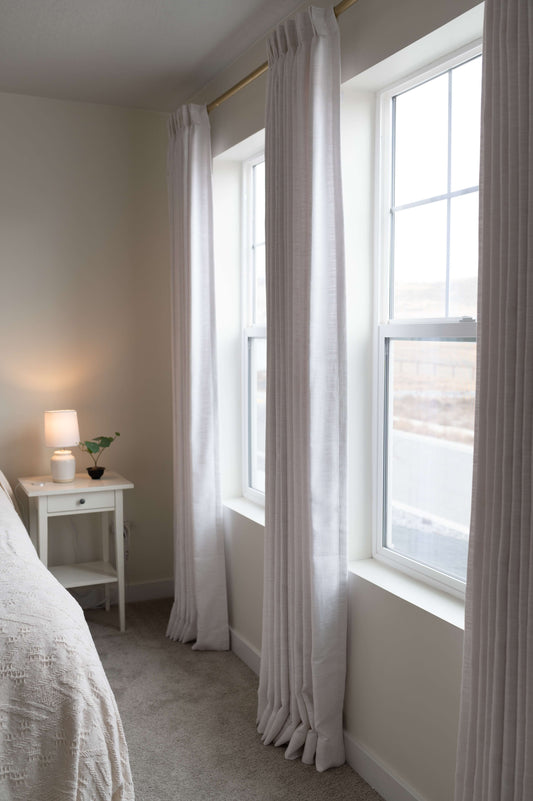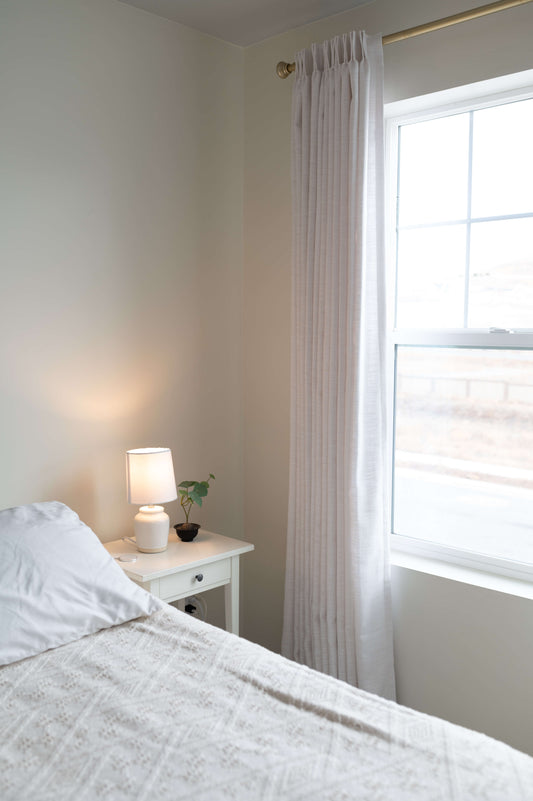Top Fabric Picks for Busy Commercial Spaces
Selecting the ideal fabric for high-traffic commercial spaces is more than a design choice; it’s a strategic decision that impacts function, sleep, and customer satisfaction. In singular environments such as offices, restaurants, hotels, and retail stores, curtains and other low-profile soft furnishings must be resilient, maintainable, and aesthetically pleasing. Distributors and dealers in the commercial curtain market need to gain a deep understanding of material performance to deliver solutions that exceed customer expectations and attract new inquiries.
This guide delves into the technical and aesthetic considerations for selecting fabrics for high-traffic commercial spaces. It covers a wide range of topics, including durability, ease of maintenance, environmental compliance, and innovative design possibilities. By exploring expert opinions and real-world applications, this comprehensive article is designed to empower industry professionals to make informed decisions that balance practicality and style.
Whether your clients are looking for fabrics that last, or materials that are easy and clean to enhance interior design, the following sections offer practical, actionable advice. The information here is designed to help curtain and furnishing dealers align their product offerings with market demand, ensuring that each installation not only meets functional standards but also enhances the corporate message. With this resource, you’ll be able to confidently make fabric recommendations to optimize the performance of discrete commercial spaces while encouraging potential customers to request more detailed information and quotes.
1. Understand Commercial Customer Needs in High-Traffic Environments
In the fast-paced environment of commercial spaces, fabrics face crowd challenges rarely encountered in residential applications. High-traffic areas cannot withstand the physical stress, environmental factors, and daily cleaning routines that materials are subjected to, so it is important to understand the specific demands placed on these fabrics.
Impact of Sustained Use on Tissue Performance
Commercial environments are inherently in constant use. Fabrics for curtains and draperies in such spaces are subject to handling, fatigue that can result from movement paths, and even accidental compromise. When selecting a fabric, it is critical to consider not only how it will initially look, but how it will age over time. Materials that resist wear, fading, and tearing are key. Look for fabrics that are designed to resist deterioration from repeated use, ensuring they will remain beautiful even after extended traffic disruptions.
Environmental and Operational Considerations
In addition to physical stress, high-traffic spaces often have unique environmental conditions. Factors such as indoor air quality, humidity, and temperature fluctuations can all affect fabric contaminants. Fabrics with moisture-wicking properties or fabrics with antimicrobial treatments can be beneficial in preventing the growth of mold and bacteria. Additionally, materials with moisture resistance can help maintain color vibrancy and prevent fading in areas exposed to natural light.
Customer Expectations and Long-Term Value
Distributors and distributors must also consider the user's perspective. Commercial customers are looking for a good investment while reducing labor costs. Fabrics that combine durability and good appearance have long-term value. Customers are increasingly concerned about sustainability; therefore, fabrics produced using environmentally friendly processes or recycled materials are becoming more popular. Balancing these factors ensures that fabric recommendations are not only technically sound, but also meet the needs of the changing market.
Combining Functionality with Aesthetics
It is important to strike a balance between function and design. Garments that perform well under high pressure should also contribute to overall decoration. For example, garments with a variety of textures, patterns, and colors can complement different design themes while providing the needs of a single environment commercial needs. By combining technical performance with visual appeal, distributors can meet the needs of customers who are both reasonable and fashionable.
In summary, understanding the complex needs of clothing is the first step to making an informed choice. By analyzing the specific challenges presented by high-traffic areas, from sustained use and environmental conditions to customer expectations, industry professionals can better guide clients to solutions that deliver lasting performance and aesthetic value.
2. Critical Parameters for Durable Configurations
Durability is critical when selecting fabrics for high-traffic spaces. The ideal fabric should not only resist daily fatigue, but also maintain its structural flaws and visual appeal over time. Here, we explore the core attributes that make a fabric durable.
Abrasion-Resistant Fabric Construction
In high-traffic areas, a fabric’s ability to resist abrasion will not be a key attribute. Abrasion resistance is often measured slowly through a “double rub” test. A high double rub coefficient indicates that the fabric can withstand repeated mechanical strain. In commercial environments, fabrics should typically exceed a threshold to ensure long service life without visible damage such as pilling or thread breakage.
Innovative weave construction techniques, such as woven or stitched finishes, can improve durability. These processes pack fibers more tightly together, making the material more resistant to mechanical stress. The construction method often determines not only durability, but also the overall performance of the weave under different conditions.
Strength and endurance to pressure
Tensile strength is another key specification. Fabrics must be able to resist stretching and tearing, especially when gaps move or unexpectedly startle. High tensile strength ensures that the material retains its shape and resists sagging or deformation over time. For commercial applications, the ability to withstand mechanical stress while maintaining its original shape is key.
Resistance to deformation and seam stability
In addition to the fabric itself, the defects of seams and cuts are also crucial. High-quality fabrics are designed to prevent seams from slipping and maintain their structure even when stressed. Collagen seams and advanced stitching techniques help improve the overall stability of the finished product. For curtains and draperies, seams are often weak points, and choosing materials with strong seam structure can prevent premature damage.
Innovations in fabric coatings and treatments
Modern fabric treatments can significantly improve durability. Coatings that provide additional protection against fatigue, moisture and stains have become standard for commercial-grade fabrics. These treatments can insulate and minimize direct contact between the fabric and the potential waist, thereby extending the life of the material. In addition, some advanced treatments help the fabric retain its color and texture after repeated use.
Testing and Quality Assurance
Before recommending a fabric for commercial use, it is critical to verify its performance through standardized testing. Testing for abrasion resistance, tensile strength, and seam stability provides quantitative data to inform purchasing decisions. Certification and compliance with industry standards further ensure that the fabric will perform as expected in high-traffic environments.
Overall, the durability of a fabric is determined by material composition, construction techniques, and advanced processing. By focusing on these key attributes, distributors can be confident in selecting fabrics that not only meet, but also meet the rigorous demands of a single commercial environment.
3. Build Body Care and Cleaning Strategies
For fabrics used in commercial spaces with high traffic, maintenance is a matter of care consideration. Ease of cleaning, stain resistance, and the ability to withstand washing without damage are key properties. This section outlines best maintenance practices and cleaning strategies to ensure the continued and sustained performance of fabrics.
Please Select Buyer
In commercial applications, fabrics are often subject to unexpected blemishes, easy cleaning, and other delicate effects. Materials with tightly woven structures tend to trap few grease particles and are easier to clean. Additionally, fabrics with nonporous surfaces help prevent liquids from penetrating the fibers, minimizing the formation of stains. For businesses, choosing fabrics that are inherently easier to clean can reduce maintenance costs and extend the life of equipment.
Protective Coatings and Finishes
Many high-traffic fabrics are coated with special coatings designed to repel liquids and stains. These coatings create an invisible barrier that protects the fibers from tray spills and other potential sources of stains. In environments where cleanliness and hygiene are a concern, such as hospitality or retail stores, these treatments can significantly reduce the frequency and intensity of periodic cleaning.
Routine Cleaning and Maintenance Recommendations
Develop a regular cleaning schedule to maintain the appearance and functionality of your fabric. Using a mild detergent as recommended by the manufacturer will generally completely remove surface soils and stains. For more stubborn stains, a more meticulous cleaning schedule may be necessary, but should be done in a manner that does not damage the protective coating of the fabric.
Handling and Storage Practices
In addition to routine cleaning, proper handling and storage practices are critical to maintaining fabric quality. When fabrics are not in use, storing them in a controlled environment (away from excessive moisture, direct sunlight, or reduced humidity) will prevent premature aging. For installations that are regularly infested and re-installed, ensuring that the fabric is handled carefully during these processes will help keep its structural contaminants.
Balance of Beauty and Practicality
While resistance and ease of maintenance are critical, the contribution of fabrics to the overall aesthetic of a space is equally important. Modern fabrics are designed with both performance and style in mind. They come in a variety of textures, patterns, and color visual functional options that strike a harmonious balance between practicality and design. This dual focus ensures that the fabrics perform well with constant cleaning, but also enhance the environment of the space.
Training and Support for Cleaning Staff
Providing clear guidance and training to cleaning staff can further extend the duration of an organization. Detailed instructions on the types of cleaning agents to be used efficiently, proper cleaning methods, and how often to clean will ensure that the organization is maintained to the highest standards. This level of support will not only improve the appearance of the organization, but also make the cleaning process safer and more secure.
In essence, choosing fabrics that are easy to clean and maintain is a smart investment for commercial spaces. By considering protective treatments, daily maintenance plans, and proper handling procedures, distributors can provide solutions that reduce long-term maintenance while maintaining the aesthetic and functional qualities of the fabric.
CONTACT US
4. Evaluate the Aesthetic Variety of Commercial Fabric Design
In high-traffic commercial spaces, aesthetics are as important as functionality. The right fabric should complement the interior design while meeting the demands of daily use. This section explores how to evaluate the visual and design elements of commercial fabrics.
Explore Design Possibilities and Patterns
Commercial spaces often benefit from fabrics that enhance the ambience and contribute to a unifying design theme. Modern fabrics come in a variety of colors, patterns, and textures, and businesses can choose based on the specific characteristics of the space. Whether pursuing a modern, minimalist style or a more traditional style, fabric selection plays a key role in creating the desired ambience and atmosphere.
The Role of Texture in Visual Impact
Texture is a key factor in how fabrics are perceived in a commercial environment. Textured fabrics can add depth and dimension, while smooth surfaces may evoke a sleek, modern aesthetic. For dealers, understanding the impact of different textures on lighting and spatial perception is a valuable asset when advising clients. Integrating tactile and visual elements not only improves the overall design, but also enhances the user experience.
Color Retention and Long-Lasting Appearance
In addition to pattern and texture, color retention is also a major consideration. Fabrics in high-traffic areas are exposed to natural light, cleaning agents, and physical wear and tear, all of which can affect their color over time. Materials with excellent colorfastness ensure that the original hue remains vibrant despite continued exposure to environmental stress. This attribute is particularly important for commercial spaces that rely on a strong visual identity.
Design Customization and Flexibility
Modern commercial fabrics are often highly customizable, allowing businesses to select materials that meet their specific design criteria. Customizable options include fiber blends, choice of finishes, and even pattern adjustments to fit unique interior layouts. This flexibility ensures that each installation can be tailored to the client’s aesthetic standards while still providing durability and functionality.
Balancing Visual Appeal with Operational Needs
Ultimately, the fabrics selected must be both practical and aesthetically pleasing. It is critical that the material not only looks good, but also withstands the rigors of high-traffic use. Striking this balance requires consideration of both the fabric’s initial impression and its long-term performance. By evaluating design aspects as well as technical specifications, distributors can ensure that each recommendation is comprehensive and customer-centric.
Embrace Emerging Design Trends
Keeping up on emerging design trends can provide an advantage in a competitive commercial marketplace. The incorporation of innovative textures, bold patterns, and unique hues can set a space apart, making it more appealing and distinctive. As the market evolves, understanding new materials and design techniques can help distributors offer cutting-edge solutions that resonate with the modern commercial aesthetic.
In summary, evaluating the aesthetic versatility of commercial fabrics is a multifaceted process. It requires an understanding of design principles, material science, and market trends. By coordinating these elements, professionals can provide fabric recommendations that will not only withstand high traffic, but also create visually striking and inviting environments.
5. Embrace sustainability in commercial fabric selection
As environmental concerns continue to influence purchasing decisions, sustainability has become a key consideration in commercial fabric selection. Distributors and agents are increasingly being asked to provide environmentally friendly, sustainable, and responsible options without sacrificing performance.
Eco-friendly material selection
Sustainable fabrics are derived from renewable resources and are often produced using environmentally friendly processes. Materials such as recycled fibers, organic cotton, and biodegradable blends are attractive alternatives to traditional fabrics. These eco-friendly options not only reduce environmental impact, but also appeal to clients who prioritize green practices in commercial spaces.
Certifications and environmental standards
One of the best ways to verify the sustainability of a fabric is to check for industry certifications. Recognized environmental standards ensure that products have been tested and verified to have environmental credentials. Certification also gives customers peace of mind, knowing that fabrics meet strict environmental standards and can perform well in demanding conditions.
Balancing Sustainability, Durability, and Aesthetics
Choosing sustainable fabrics does not mean sacrificing quality. Modern eco-friendly textiles are designed to withstand heavy use, with durability and ease of maintenance comparable to traditional fabrics. In addition, sustainable fabrics are now available in a variety of colors, patterns, and textures, ensuring that the aesthetic requirements of commercial spaces are fully met. In today's environmentally conscious market, the balance between sustainability, durability, and design is key to winning customers.
Lifecycle and End-of-Life Considerations
An often overlooked aspect of sustainability is the lifecycle of fabrics. From production to disposal, each stage affects the overall environmental footprint. Fabrics designed for long-term use reduce the need for frequent replacement, thereby minimizing waste. In addition, recyclable or biodegradable materials can further promote a circular economy, where products can be reused or safely decomposed at the end of their useful life.
Economic and Market Benefits of Sustainable Fabrics
For distributors, offering sustainable fabric options can provide a competitive advantage. Many commercial customers now prioritize suppliers that demonstrate environmental responsibility. This commitment can be a powerful marketing tool, appealing to businesses that want to align their brand with environmentally friendly practices. This, in turn, can increase inquiries and build long-term partnerships with customers who value sustainability and performance.
In summary, incorporating sustainability into fabric selection is not only an ethical choice, but also a strategic business decision. By adopting environmentally friendly materials, verifying environmental certifications, and considering the entire life cycle of products, distributors can provide solutions that meet the practical and ethical needs of high-traffic commercial environments.
6. Technical Specifications and Compliance in Fabric Selection
In commercial spaces where safety and regulatory standards are critical, technical specifications play a vital role in fabric selection. This section outlines the basic compliance factors and technical details that should be considered when recommending fabrics for high-traffic areas.




Fire and Safety Standards
One of the most important technical requirements for commercial fabrics is fire resistance. Materials used in public spaces must meet strict fire safety regulations to ensure protection for occupants. Choose fabrics that have been tested for flame spread and smoke generation and that meet or exceed relevant fire safety codes. Ensuring fabrics meet these standards is not only a regulatory requirement, but also a critical factor in protecting life.
Chemical and Environmental Resistance
Commercial fabrics are often exposed to cleaning chemicals, pollutants, and other environmental contaminants. It is critical to select fabrics that are designed to resist chemical degradation. This includes selecting materials that can withstand repeated exposure to cleaning agents without losing their structural integrity or visual appeal. Verification through laboratory testing and certification is a smart step in the decision-making process.
Testing Procedures and Quality Assurance
Strict testing protocols ensure that fabrics meet the high-performance standards required for busy commercial environments. Key tests may include abrasion resistance, tensile strength, and colorfastness under various conditions. Distributors should request detailed test reports from manufacturers and, where possible, independent evaluations. These quality assurance measures help confirm that the fabric will provide consistent performance over the long term.
Regulatory Compliance and Industry Standards
In addition to fire performance, fabrics may need to meet other industry-specific standards related to safety and performance. Whether the fabric is used in hospitality, healthcare or retail, ensuring it complies with relevant regulations is critical. Staying up to date on changes in local and international standards not only protects end users, but also enhances the credibility of product recommendations.
Integrating Technical Data into Sales Strategies
For distributors, a thorough understanding of technical specifications and compliance factors can be a powerful tool in sales conversations. Providing detailed performance data and certification information builds trust with customers, who are increasingly concerned about safety and quality. This technical transparency can be a differentiating factor in a competitive market, encouraging potential buyers to initiate inquiries and collaborations.
By paying sufficient attention to technical specifications and compliance, industry professionals can ensure that the fabrics they choose are safe, reliable, and well-suited to the challenges of high-traffic commercial environments. This meticulous consideration not only protects customers, but also enhances the professionalism and reliability of distributors' products.
7. Practical Implementation: Case Studies and Real-World Applications
Translating technical knowledge into practical solutions is essential to success in the commercial fabrics market. This section highlights real-world applications and case studies that illustrate how common challenges in high-traffic environments can be addressed through careful fabric selection.
Case Study: Upgrading a High-Use Corporate Lobby
In one scenario, a corporate lobby with high daily traffic required an upgrade in curtain fabric. The selected fabric combines strong abrasion resistance with sophisticated design tones to meet the dual requirements of durability and aesthetics. Detailed performance testing demonstrated that the fabric can withstand constant use while maintaining its vibrant appearance, ultimately reducing maintenance costs and increasing customer satisfaction.
Real-World Applications in Hospitality Settings
Hotels and restaurants often face challenges related to fabric fatigue in dining areas and public spaces. By selecting materials with stain resistance and easy cleaning options, operators can maintain high levels of display without the expense of sanitizing replacements. Practical implementation in these environments often involves combining fabrics with protective fabrics that can withstand damage and cleaning chemicals.
Perceiving Unique Challenges in Retail Environments
Retail spaces are dynamic, often with interactive displays and a constant flow of customers. The choice of mobile fabrics for these environments must not only accommodate physical fatigue, but also meet the requirements of interval cleaning and visual consistency. In multiple installations, custom fabric solutions personnel that offer flexibility and a wide range of design options help create stimulating spaces that match the rigors of daily operations.
Lessons Learned from Various Commercial Projects
In a variety of industries, the successful application of high-performance fabrics has yielded valuable insights. Key lessons include the importance of rigorous testing, the benefits of integrating advanced protective treatments, and the need for ongoing collaboration between fabric manufacturers and distributors. These collaborative efforts ensure that every fabric recommendation is backed by expertise and real-world validation.
Enhanced Customer Trust
Providing detailed case studies and performance data to potential customers can greatly enhance their confidence in garment recommendations. By sharing real-world examples of specific relationship garments that have performed well in high-traffic environments, distributors can demonstrate their deep understanding of commercial challenges and solutions. This transparency not only builds, but also drives inquiries and long-term partnerships.
Through these real-world examples and case studies, it is clear that the choices made and implemented in commercial apparel can deliver significant benefits. From enhanced durability to improved aesthetics and reduced maintenance, the right garment selection is the cornerstone of successful commercial design and operations.
About Us
8. Future Trends and Innovations in Commercial Fabric Solutions
As technology and design options evolve, apparel fabric solutions continue to change. In this final section, we’ll explore emerging trends and innovations that are poised to transform the apparel fabrics market.
The Rise of Smart Matching and Integrated Technologies
Recent advances in textile technology have resulted in smart fabrics that incorporate sensors, responsive materials, and even self-cleaning capabilities. These innovations hold great promise for commercial applications, as the ability to monitor fabric condition and even adapt to environmental changes can enhance functionality. While still in its early stages, smart fabrics represent an alarm clock approach that may soon redefine performance standards in high-traffic spaces.
Advances in Eco-Friendly Manufacturing Processes
Innovation in the textile industry continues to be driven. New manufacturing processes that reduce waste and lower environmental impact are gaining traction. These advances not only produce environmentally responsible fabrics, but also offer improved performance characteristics, such as enhanced durability and stain resistance. Understanding these trends allows distributors to offer cutting-edge solutions that meet both functional and sustainability standards.
Customization through Digital Manufacturing
Digital manufacturing technology has enabled fabric production to reach a level of customization that goes beyond the norm. The technology can precisely control pattern, deformation, and even structural properties, ensuring that each piece of fabric can be custom tailored to the specific needs of a commercial space. As digital manufacturing becomes easier, the potential for fabric solutions in high-traffic environments will continue to expand the scope for customization, providing distributors with unique opportunities to differentiate their products.
Integration of Data Analytics and Quality Control
Data quality drives decisions in textile manufacturing and control more and more closely. By leveraging analytics, manufacturers can monitor fabric performance in real time and adjust production parameters to optimize important qualities. This integration of data analytics ensures delivery of fabrics for the commercial market that meet the highest standards for durability, safety, and aesthetics. For distributors, this means reliability and fewer unexpected post-installation issues.
Be Prepared for the Next Generation of Commercial Demands
The transformation of commercial spaces is driving changes in product demand. As companies continue to innovate in design and functionality, the demand for fabrics that are not only versatile but also technologically advanced will continue to grow. Distributors who keep up with these future trends position themselves as industry leaders, ready to meet the evolving needs of their customers with innovative and enriching solutions.
In summary, the future of commercial fabric solutions is bright, with advances in technology and sustainability paving the way for improved performance. By packaging their portfolio with new innovations proposed by emerging trends, distributors can continue to offer fabrics that not only meet high standards but are also ready for future challenges.
Conclusion
Choosing the right apparel for high-traffic commercial spaces is a multifaceted challenge that requires careful consideration of durability, maintenance, aesthetics, sustainability, and technical compliance. By understanding the unique needs of a single commercial environment, industry professionals can ensure that apparel is not only rigorously used, but also enhances the overall importance of the space. From advanced protective apparel to innovative manufacturing processes, recommending available options enables distributors to provide products that combine performance and style.
The recommendations presented in this guide emphasize the importance of balancing technical specifications with design flexibility. By focusing on key attributes such as wear resistance, easy cleaning, and durability, professionals can create solutions that are both durable and beautiful. In doing so, they establish a foundation of trust with customers who seek reliable, long-lasting organizational solutions to meet the needs of high-traffic spaces.
With detailed case studies, data, and emerging trends, distributors are well-positioned to answer customer questions and provide customized recommendations to address the evolving needs of the commercial market. This comprehensive approach not only improves customer satisfaction, but also establishes your business as a knowledgeable partner in the commercial solutions space. The right apparel selection can transform a commercial space—improving ultimate functionality, reducing maintenance costs, and creating a welcoming environment that encourages customer engagement and long-term loyalty.
Frequently Asked Questions
Q1: What are the most important factors to consider when selecting fabrics for busy commercial spaces?
A1: Key factors include durability, easy maintenance, stain and moisture resistance, technical compliance (such as fire safety standards), versatility, and sustainable production methods. Each of these elements ensures that the fabric will not only withstand high traffic, but also enhance the overall design of the space.
Q2: How can you ensure that the fabric will remain durable over time in high-traffic areas?
A2: Look for fabrics with high abrasion resistance ratings (usually shown by dual coefficient of friction test results), high tensile strength, and reliable seam construction. Independent testing and certification by recognized organizations can provide additional assurance of long-term durability.
Q3: Are there environmentally friendly fabric options suitable for commercial facilities?
A3: Yes, many manufacturers now offer sustainable fabrics made from recycled or renewable fibers. These fabrics often meet environmental certifications and have strict performance standards that differ from traditional materials, making them ideal for valuing without continuously compromising quality.
Q4: What maintenance methods can help prolong the maintenance of skin?
A4: Daily cleaning, proper handling, and regular protective care with sensitizers are essential. Additionally, following the manufacturer's care guidelines and storing fabrics under controlled conditions can prevent premature fatigue and maintain their appearance over time.
Q5: How do emerging technologies such as smart fabric selection affect fabric selection in commercial spaces?
A5: Smart fabric selection has innovative features such as self-cleaning functions, integrated sensors for monitoring fabric condition, and adaptive functions. While these technologies are still in their emerging stages, they are expected to enhance functionality and reduce maintenance, making them promising options for future commercial applications.
Q6: What role do technical specifications and certifications play in fabric selection?
A6: Certifications and detailed technical specifications ensure that fabrics meet necessary safety and performance standards, such as reinforcement and chemical resistance. This transparency not only builds trust with customers, but also helps prevent compliance issues in high environmental traffic.

ABOUT US
